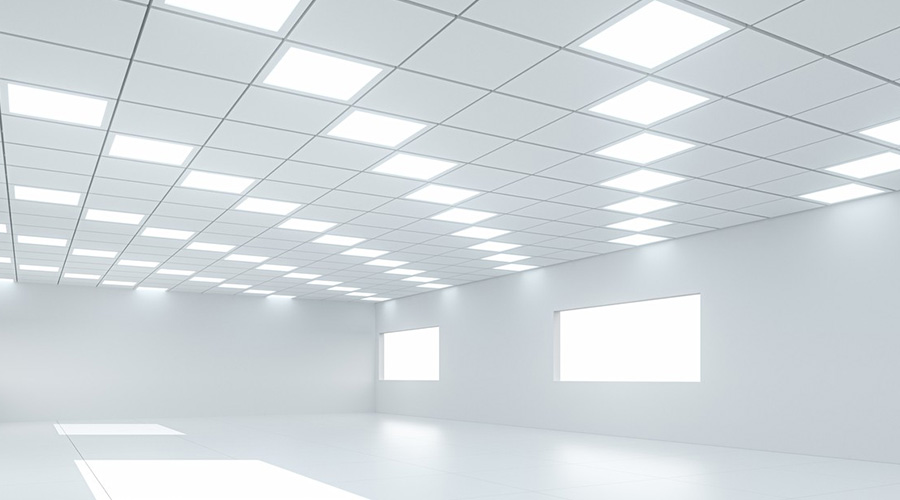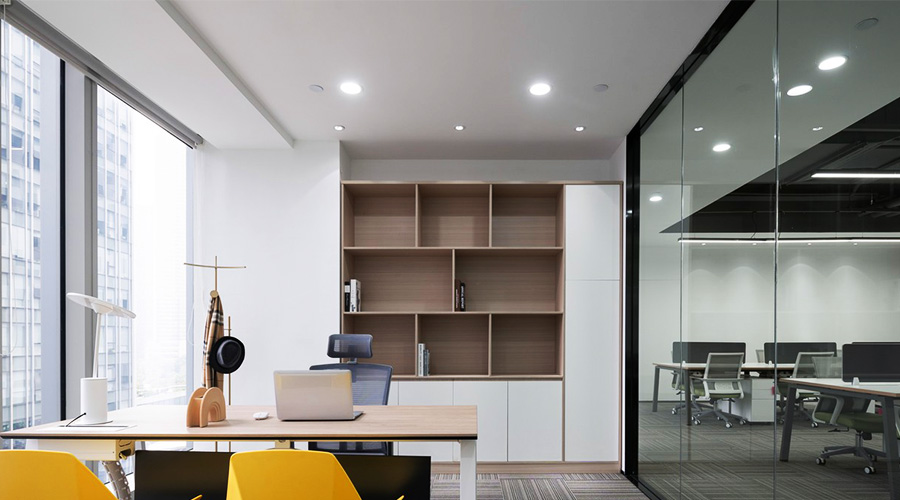As businesses continuously look for ways to reduce costs and operate more sustainably, the choice of lighting systems plays a crucial role. LED lighting has emerged as the premier solution for commercial spaces, offering a range of benefits that outshine traditional fluorescent and incandescent options. In this article, we will explore the many advantages of LED lighting, dive into the science behind its energy efficiency, and highlight the different types of LED lights commonly used in commercial settings.
1. Benefits of Using LED Lighting Over Traditional Solutions
Energy Savings
One of the most significant benefits of LED lighting is its energy efficiency. LEDs use up to 75% less energy than traditional incandescent bulbs and about 50% less than most fluorescent lighting. For businesses, this translates to substantial cost savings, especially in large facilities such as warehouses, offices, and retail stores where lights are used for extended periods.
Longevity
LEDs have an exceptional lifespan compared to traditional lighting solutions. While incandescent bulbs last around 1,000 hours and fluorescents about 8,000 hours, LEDs can last up to 50,000 hours or more. This dramatically reduces the frequency of replacements and maintenance costs, making LEDs a smart long-term investment for commercial operations.
Reduced Heat Emission
Traditional lighting systems, particularly incandescent bulbs, convert much of the electrical energy they consume into heat rather than light. This not only wastes energy but also contributes to higher cooling costs in climate-controlled environments. In contrast, LEDs generate very little heat, reducing the burden on air conditioning systems and providing a safer, cooler work environment.
Environmental Impact
LEDs are an environmentally friendly choice for businesses. They contain no toxic elements like mercury, which is found in fluorescent lights, and they are 100% recyclable. Additionally, the reduced energy consumption of LEDs leads to lower carbon emissions, helping businesses contribute to sustainability goals and meet eco-friendly certifications.
Better Quality of Light
LED lighting provides brighter and clearer illumination. The light quality is more focused and directional, making it ideal for task lighting in office environments, retail displays, and industrial facilities. With a wide range of color temperatures, LEDs also offer flexibility in creating the desired ambiance, from warm and inviting to crisp and professional.
2. How LED Lighting Works and Why It’s Energy Efficient
Understanding LED Technology
LED stands for Light Emitting Diode, and at the core of this technology is a semiconductor that emits light when an electric current passes through it. Unlike traditional bulbs, which rely on heating a filament or exciting gas to produce light, LEDs generate light through electroluminescence, a process that is much more efficient and requires significantly less energy.
Minimal Energy Loss
Traditional lighting solutions lose a considerable amount of energy in the form of heat. Incandescent bulbs, for instance, convert only about 10% of the energy they consume into visible light, with the remaining 90% wasted as heat. Fluorescent lights fare better but still lose around 30-40% of their energy to heat. LEDs, however, convert up to 90% of their energy into light, which makes them far more efficient.
Directional Lighting
One of the reasons LEDs are so efficient is their ability to produce directional light. Traditional bulbs emit light in all directions, requiring reflectors and diffusers to guide the light where it’s needed. LEDs, on the other hand, emit light in a specific direction, minimizing wasted light and maximizing efficiency. This makes LEDs perfect for task lighting and fixtures designed for focused illumination, such as spotlights and downlights.
Dimming Capabilities
Another factor that contributes to the energy efficiency of LED lighting is its dimming capability. Unlike traditional bulbs that can become inefficient when dimmed, LEDs maintain their energy savings even at lower brightness levels. This flexibility not only saves energy but also extends the lifespan of the lights.
3. Types of LED Lights Used in Commercial Settings
LED Panel Lights
Commonly found in offices, conference rooms, and educational facilities, LED panel lights are designed to replace traditional fluorescent fixtures. They provide bright, even light that reduces glare, making them ideal for areas where productivity and comfort are key. LED panel lights are available in various sizes and color temperatures, allowing businesses to customize their lighting to specific needs.
High-Bay and Low-Bay LED Lights
For commercial spaces with high ceilings, such as warehouses, factories, and gymnasiums, high-bay LED lights are the go-to solution. They provide powerful illumination over large areas and can be installed at heights of 20 feet or more. Low-bay LEDs are used in areas with lower ceilings and provide the same efficiency and performance in spaces like retail stores and supermarkets.
LED Tube Lights
Replacing traditional fluorescent tube lights, LED tube lights are popular in commercial settings like parking garages, kitchens, and industrial areas. They offer a long lifespan, energy efficiency, and lower maintenance requirements. LED tubes come in various sizes, such as T8 or T5, making them versatile for retrofitting existing fixtures.
LED Downlights and Spotlights
Often used in retail spaces, showrooms, and office lobbies, LED downlights and spotlights provide focused illumination that highlights specific areas or objects. Their directional nature makes them ideal for creating accent lighting, drawing attention to products, displays, or artwork.
Outdoor LED Fixtures
For outdoor commercial spaces, LED floodlights, streetlights, and wall packs are widely used due to their durability and energy efficiency. These lights are designed to withstand harsh weather conditions and provide bright, reliable illumination for parking lots, building exteriors, and security lighting.
Conclusion
The shift toward LED lighting is not just a trend but a smart business move for companies looking to enhance their energy efficiency, reduce costs, and create safer, better-lit environments. LEDs outperform traditional incandescent and fluorescent lights in nearly every aspect, from energy consumption to longevity and environmental impact. With various types of LED lights available for different commercial settings, businesses can find tailored solutions to meet their specific needs. By adopting LED technology, you’re not only improving your bottom line but also contributing to a more sustainable future.






